How to Teach Writing to ESL Students
The following is an Off2Class guest post by well-known ESL materials writer and teacher Frank...
5 min read
Share this post
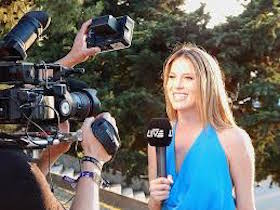
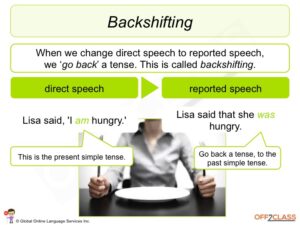
 In my own lesson plans, I’ve decided to introduce the concept of backshifting gradually. In my first reported speech lesson plan (RS1.1-Intro-to-Reported-Speech-1), I start with the basics by backshifting from the Present Simple to the Past Simple. I’ve included here a link to download this lesson, so that you can access it even without a free Off2Class account:
By my third reported speech lesson plan (RS1.3-Intro-to-Reported-Speech-3), I introduce the backshifting principle for all the major tenses:
In my own lesson plans, I’ve decided to introduce the concept of backshifting gradually. In my first reported speech lesson plan (RS1.1-Intro-to-Reported-Speech-1), I start with the basics by backshifting from the Present Simple to the Past Simple. I’ve included here a link to download this lesson, so that you can access it even without a free Off2Class account:
By my third reported speech lesson plan (RS1.3-Intro-to-Reported-Speech-3), I introduce the backshifting principle for all the major tenses:
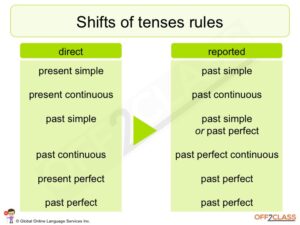
 After backshifting…
Once your students are comfortable with backshifting, there are some additional concepts to teach your students when shifting from direct to indirect (i.e., reported) speech.
Modal Verbs in reported speech: most modal verbs need to be changed when we move from direct to reported speech. Here’s a summary of the major changes (note some modal verbs stay the same!):
After backshifting…
Once your students are comfortable with backshifting, there are some additional concepts to teach your students when shifting from direct to indirect (i.e., reported) speech.
Modal Verbs in reported speech: most modal verbs need to be changed when we move from direct to reported speech. Here’s a summary of the major changes (note some modal verbs stay the same!):
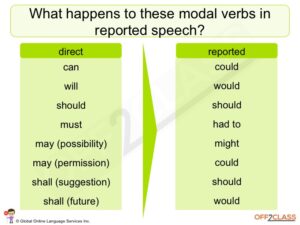 Reporting Questions: There are different sets of changes for questions when moving from direct speech to reported speech. This depends on the type of question being reported.
For Yes/No questions, we need to add if or unless to the question in reported speech. (“John asked if I wanted to join him for dinner.”)
For Question Word Questions, we do not switch the order of the subject and verb in the sentence. (“Jenny asked what time it was.”)
Reporting Questions: There are different sets of changes for questions when moving from direct speech to reported speech. This depends on the type of question being reported.
For Yes/No questions, we need to add if or unless to the question in reported speech. (“John asked if I wanted to join him for dinner.”)
For Question Word Questions, we do not switch the order of the subject and verb in the sentence. (“Jenny asked what time it was.”)
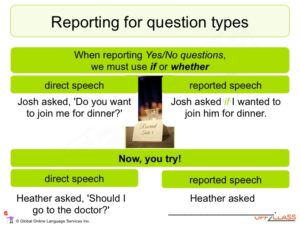
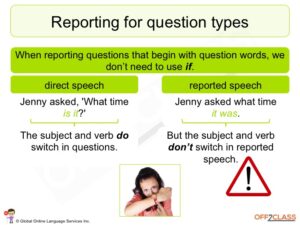
Share this post



Leave a Reply